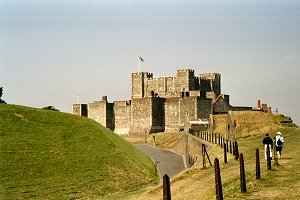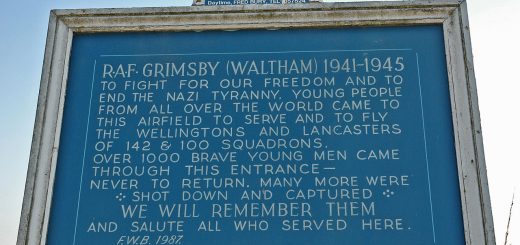Swinsty Hall
Swinsty Hall dates from the 16th Century and can be found on the banks of Swinsty Reservoir (built 1874). According to John Ingram in The Haunted Homes and Family Traditions of Great Britain (1897), the house is haunted by a man named Robinson who according to legend bought the property with the profits he gained from the sale of goods he looted from the houses of the dead in London during one of the infestations of the bubonic plague.
 Ingram had the following to say about this house and its grisly story, quoting William Grainge (born 1818 – died 1895) (possibly from his ‘The History of the Timbles and Snowden’ 1895) a Yorkshire based antiquarian, historian and book publisher:
Ingram had the following to say about this house and its grisly story, quoting William Grainge (born 1818 – died 1895) (possibly from his ‘The History of the Timbles and Snowden’ 1895) a Yorkshire based antiquarian, historian and book publisher:
In the picturesque valley of the Washburn, high up on the right bank, in the parish of Otley, stands Swinsty Hall. It is a large building, in a kind of Elizabethan architecture, says Mr. William Grainge, and “on its first creation would, doubtless, be considered a great, grand, and glorious mansion, with its many gables and multitudinous windows. The greatest wonder is to see it here at all, in such a lonely place. It has been built in a substantial manner, and at a heavy cost. The round plan is that of an irregular quadrangle, with a projecting wing on the north-west. The south front is the most interesting portion, three stories in height; the central rooms, the fronts of which project some distance from the main line on the first and second floors, are each lighted by a window of twenty lights, divided by a transom, which gives forty openings in all; indeed, that side has much the appearance of an enormous lanthorn.”
“Swinsty Hall” continues Mr. Grainge, ” has fallen somewhat from its high estate in modern times, stripped of its antique furniture, and now {i.e. 1864) occupied by the families of four farmers (a giant or enchanter, with a rambling ghost or two, would be a much more appropriate tenantry), the barns and outhouses clustered around give it quite a singular and unique appearance.
There is, as might be guessed, a strange weird legend connected with this old out-of-the-way dwelling, and it is generally told, says Mr. Grainge, in the following way: ” The builder of the Hall was a man of the name of Robinson, who, in his youth, was a poor weaver, and resided in a humble cottage near where the Hall now stands. This cottage, now doing duty as a cow-house, yet remains to vouch for the truth of the story. This young man left his humble home, travelled to London at a time when the plague was raging in that city ; when death had left many houses totally uninhabited and desolate, wherein no survivors were left to bury the dead, and no heirs to claim their wealth. Our north country adventurer seeing this state of things, not for- getting himself amid the general mourning and confusion, took possession of the gold thus left without an owner, to such an extent, that he loaded a wagon and team of horses with the wealth thus acquired ; with which he returned homeward, and, in due time, again reached the place of his birth. But the story of the plague had reached the place as soon as himself and his gold, and none of his former neighbours would admit him into their dwellings, for fear of contagion ; so he took up his abode in a barn, which still remains. In order to cleanse his gold from any infectious taint which might possibly cling to it, Robinson washed the whole carefully in the Greenwell Spring, which well yet remains, bearing the same name. With the wealth thus acquired he purchased the estate and built the Hall at Swinsty.”
For a considerable period, many generations of .Robinsons enjoyed the property, until, at last, it passed by marriage to the Bramleys, who still enjoy it, or did quite recently. [note: It passed to Robert Bramley, husband of Mary Robinson around 1772].
But, according to popular faith, the founder of the family, the original possessor of the Hall, cannot cleanse himself, so readily as he did his gold, from its contamination: his troubled spirit still haunts the old spot. At certain times, those who are gifted with the faculty of seeing apparitions, may behold that of Robinson bending over the Greenwell Spring, and striving to cleanse his strangely acquired coin even more spectral than himself. There he bends, and rubs, and rubs, and rubs away at his ghastly spoil, and never seems satisfied that it is freed from its taint, or, perhaps, from its stains : who knows?
However the legend is flawed and therefore maybe we should suspect the validity of the haunting story. In 1575 Ralph Wood owned Swinsty Hall and arranged the marriage of his son Francis Wood and Ellen Sorell with the bride’s father, Henry Sorrell of North Grange. Part of this arrangement required Henry Sorrell to pay money to Ralph Wood in order to fund the construction of a house for their children. Henry Robinson of Old Lound in Lancashire acquired Swinsty Hall later on, when he foreclosed on a loan to Francis Wood circa 1590. In 1596 Ralph and Francis then sold him the rest of their estate and buildings. During the early seventeenth century Robinson is then responsible for major remodelling of the house. I am not sure where Robinson acquired his money but I somehow doubt it was robbing the homes of plague victims in London. The first major outbreak of the bubonic plague in London was 1603 when 30,000 people died. This was 13 years after Robinson bought Swinsty Hall.




Recent Comments